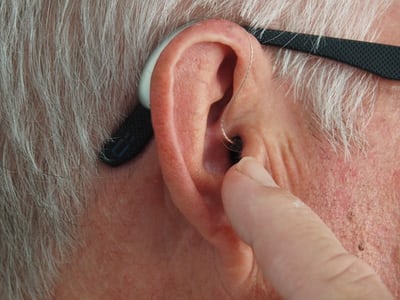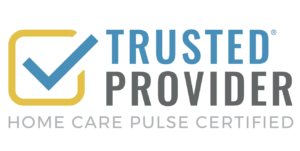In today’s modern and tech-savvy world, more and more people are embracing technology, seniors included. Close to 70 percent of the elderly are now connected to the internet. Undeniably, technology for seniors is growing in popularity and has shown no signs of slowing down.
Nowadays, tech devices have become an integral part of the daily life of most seniors. These ingenious technologies have allowed them to move around, connect with loved ones, and live healthier, fulfilling, and more connected lives.
Invaluable Tech Solutions for Seniors
From managing medications and sleep to assistance with day-to-day life, here are some of the most innovative technologies that have made life easier for seniors:

Hero Digital Pill Dispenser
Hero digital pill dispenser is designed to dispense a senior’s medication at a scheduled time each day. The Hero digital pill dispenser can hold up to 10 different kinds of pills of various shapes and sizes. It can also be tailored to any medication schedule.
The digital pill dispenser can store up to 90 days of medication supply, depending on the pill’s size. This digital pill dispenser is also connected to the Hero app, which tracks the pills’ consumption and doses.
The Hero digital pill dispenser won’t accept half pills, gummies, and sticky dissoluble pills to avoid contamination.
Additional Features
- 30-day free trial
- Password protected
- HIPAA-compliant security for all data
- Free shipping and returns
- Notifications (when medication is low)
- Free software update
Amazon Echo Dot (3rd Generation)
This smart and compact speaker has many senior-friendly abilities and features. Apart from being voice-activated, it is also small, so they can take it anywhere. This imaginative device can also be used to:
- Stream music
- Play games
- Check the weather
- Receive news updates
- Set alarms for medications
- Chat
- Create grocery lists
When set up to guard the home, this additional feature included in the Alexa app provides seniors alerts about smoke alarms, broken glass, and carbon monoxide.
Additional Features
- Hands-free calls
- Privacy Protection
- Voice control (turn on lights, adjust thermostats, and lock doors)
COWIN E7 Active Noise Cancelling Bluetooth Over-Ear Headphones
If your senior loved one has hearing loss, the COWIN E7 can be a great option. Its advanced active noise reduction technology is designed to cancel lower frequencies. This gives them the ultimate listening experience when they listen to their favorite music or podcasts or watching their favorite movies.
COWIN E7 also comes with Bluetooth technology that makes hands-free listening possible.
Additional Features
- 30-hour battery life
- High-quality built-in microphone
- 90 degrees swiveling ear cups
- Professional padding

GrandPad
This easy-to-use tablet is designed primarily for seniors and comes with built-in wireless data. It allows them to listen to music, video chat with their loved ones, and play games with the utmost ease.
This breakthrough technology also allows seniors access to their own private family network where approved friends and loved ones can update contact information and add photos.
The GrandPad is also a practical gift for seniors who are not tech-savvy since it won’t require passwords and won’t need any modem.
Additional Features
- Unlimited support team access
- Safe from spams and scams
- Has enlarged text for easy reading
- Sends voice-automated emails
Tile Sticker
Seniors who always lose everyday items would sure love Tile Sticker. Tile Sticker is placed on wallets, keys, remotes, and other things that can easily be misplaced. When seniors need to find their lost items, they need to use the company’s app on their phones to locate them.
The Tile Sticker has a Pro version that’s recommended for valuable items. It comes with a Bluetooth range of 400 feet.
Additional Features
- 3-year battery life
- Free shipping
- 30-day guarantee
- Waterproof
Fitbit Versa 2
The Fitbit Versa 2 is a health manager and versatile watch rolled into one. It comes with a heart-rate tracker and provides easy access to information and apps. You can also use it to listen to unlimited music on Spotify, track the weather, and set alarms. What’s even impressive? They can use it to pay the bills while on the go.
Additional Features
- Personalized clock face
- Fitbit pay
- Sleep tracker
- 24/7 heart rate tracking
- Built-in Amazon Alexa
Ring Video Doorbell
Ring designs doorbell camera systems that provide notifications to smartphones in real-time when motion sensors are triggered or when visitors ring the doorbell. This product will not only help ensure their safety, it can also help make life easy for seniors.
With the Ring Video Doorbell, they can speak to visitors anytime and anywhere. The device can also be used to monitor the doors around the home. Custom motion settings can be set. Safety and crime alerts can also be sent directly to a smartphone.
Additional Features
- Advanced motion settings
- 1080 HD video and two-way talk
- Night vision
Conclusion
It is reassuring to know that many innovative technologies are now available to help make life easy for seniors. While some technologies require some getting used to, they are a massive step in the right direction for improving their quality of life.

About the Author
Melissa Andrews is the Content Marketing Strategist for Paradise Living Centers, an assisted living center for seniors with locations in Paradise Valley and Phoenix, Arizona. In her spare time, she enjoys cooking and going on hiking trips with her siblings and cousins.





























 Caring Super Star of 2022
Caring Super Star of 2022 Daily Herald Best of Utah Valley, 2022
Daily Herald Best of Utah Valley, 2022 Utah Valley Chamber of Commerce Business of the Year
Utah Valley Chamber of Commerce Business of the Year